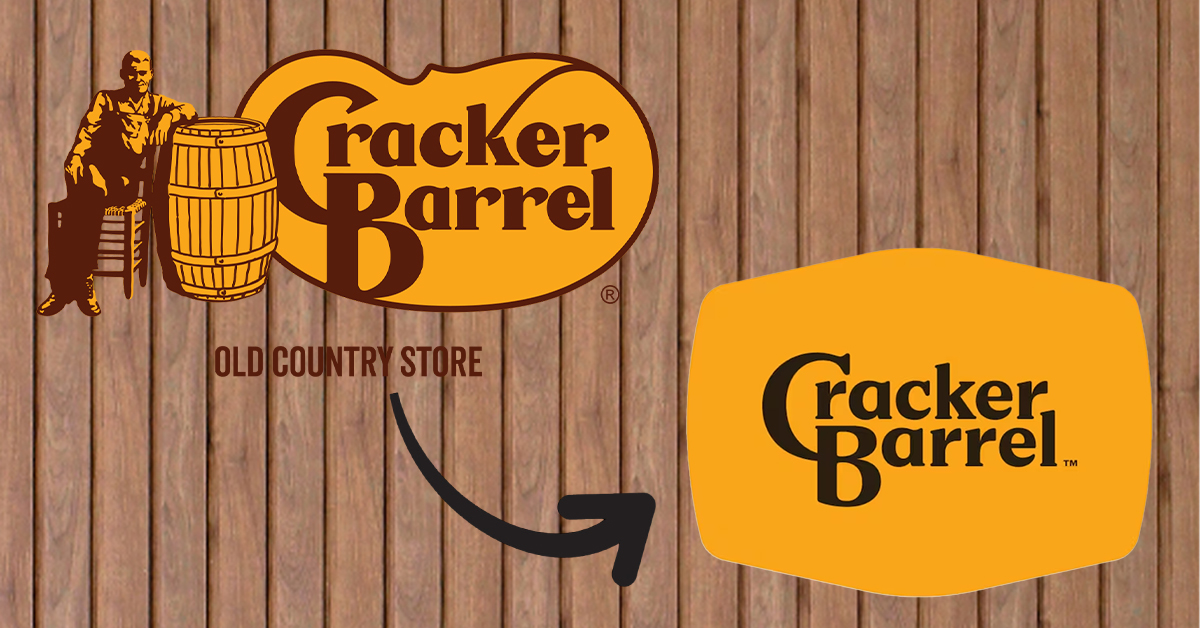Effective Business Growth Strategy for Sustainable Success

Key Takeaways
- A well-defined business growth strategy is crucial for expanding your reach, increasing profitability, and remaining competitive in the market.
- Core components of an effective strategy include thorough market research, a solid sales funnel, and customer relationship management (CRM) systems to enhance engagement.
- Businesses can pursue both organic growth strategies, like market penetration and product development, as well as inorganic methods such as mergers, acquisitions, and franchising.
- Setting SMART goals and employing actionable steps like lead generation and sales training are essential for successful implementation and execution of growth strategies.
- Measuring success through key performance indicators (KPIs) such as Customer Acquisition Cost (CAC) and Sales Conversion Rate allows for informed adjustments and continuous improvement of strategies.
In today’s competitive landscape, having a solid business growth strategy is essential for success. Whether you’re a startup or an established company, understanding how to expand your reach and increase profitability can set you apart from the rest. You’ll discover that a well-crafted strategy not only helps you identify opportunities but also equips you to tackle challenges head-on.
As you explore various approaches to growth, it’s crucial to align your strategy with your core values and market demands. From leveraging technology to exploring new markets, the right strategy can propel your business forward. Get ready to unlock the potential of your business and navigate the path to sustainable growth.
Understanding Business Growth Strategy

A business growth strategy is essential for small businesses aiming to expand in a competitive market. It outlines your approach to increasing revenue, enhancing customer relationships, and achieving long-term success.
Definition and Importance
A business growth strategy defines how you plan to increase your sales, whether through market penetration, product development, or entering new markets. For small businesses, this strategy is vital. It helps you identify customer needs, tailor your offerings, and respond effectively to market changes. A solid growth strategy aligns with your business goals, ensuring your sales pipeline remains robust and your sales targets are met.
Key Components
- Market Research
Conducting thorough market research allows you to understand consumer behavior, market trends, and competitive landscapes. This insight informs your sales strategy, enhancing lead generation efforts.
- Sales Funnel
Establishing an effective sales funnel is crucial. It guides prospects through various stages, from awareness to conversion, improving your closing sales rate.
- Customer Relationship Management (CRM)
Implementing a CRM system helps you manage customer interactions effectively. This tool supports lead nurturing and enhances customer engagement, vital for driving repeat business.
- Sales Team Development
Training your sales team is essential. Equip them with the right sales tactics and product knowledge to handle objections and improve negotiation skills, ensuring higher sales conversion rates.
- Sales Metrics and Reporting
Tracking sales performance through meaningful metrics offers insights into which strategies yield results. Regular sales reporting allows you to adjust tactics, optimize the sales process, and achieve your quotas.
- Customer Acquisition Strategies
Developing effective customer acquisition strategies, like referral sales and upselling, expands your customer base. Networking and relationship building enable your business to tap into new markets and increase revenue.
- Pricing Strategy
Establishing a competitive pricing strategy enhances your value proposition. This attracts more customers while maintaining a healthy profit margin.
- Market Penetration
Exploring new sales opportunities within existing markets enhances your sales outreach efforts. Focus on maximizing territory management to improve overall sales efficiency.
By focusing on these components, you optimize your business growth strategy and position your small business for sustained success.
Types of Business Growth Strategies

Businesses can adopt various growth strategies to enhance their market presence and boost revenue. These strategies often categorize into organic and inorganic methods tailored to the specific needs of small businesses.
Organic Growth Strategies
Organic growth strategies focus on leveraging your existing resources to expand your business. This approach relies on methods such as:
- Market Penetration
- Increase market share by selling more of your existing products to current customers. Techniques include improving product quality and implementing promotional campaigns to attract repeat business.
- Market Development
- Expand into new customer segments or geographic areas. Conduct thorough market research to identify potential markets and customize your sales pitch to meet customer needs.
- Product Development
- Introduce new products or enhance current offerings. Monitor customer feedback to adjust your sales strategy, ensuring that your new products align with market demands.
Inorganic Growth Strategies
Inorganic growth strategies involve external measures to drive growth, such as:
- Mergers and Acquisitions
- Acquire or merge with other businesses to access new markets and customer bases. Strategic partnerships can strengthen your position and improve sales performance.
- Franchising
- Expand your brand by franchising your business model. This approach allows others to implement your sales process while you benefit from their sales efforts.
- Joint Ventures
- Collaborate with complementary businesses to enter new markets. Joint ventures can enhance lead generation and increase your customer acquisition capabilities.
Understanding and implementing these growth strategies enables you to build a robust sales pipeline, enhance customer engagement, and ultimately achieve sustainable growth for your small business.
Analyzing the Market for Growth

Analyzing the market effectively enables your small business to uncover growth opportunities. Utilizing proper market research techniques can enhance your sales strategy and improve overall performance.
Market Research Techniques
Conducting market research requires various techniques to gather valuable insights. Surveys allow you to collect feedback directly from customers about their needs and preferences. Focus groups provide a platform for in-depth discussions, offering qualitative data on product perception. Online analytics tools track consumer behavior patterns and interactions on your website, revealing buying habits. Competitor analysis gives you a clear view of market positioning and pricing strategies, allowing you to refine your sales funnel and tailor your offerings effectively. These methods strengthen your understanding of customer engagement, essential for successful customer acquisition.
Identifying Opportunities
Identifying opportunities involves examining market trends and customer demands. Monitor industry shifts that signal changes in consumer behavior. For instance, emerging technologies might create room for new product development, enhancing your sales potential. Utilize your sales pipeline to track leads and sales performance. Evaluate existing sales metrics to pinpoint high-conversion strategies. Networking within your industry can uncover partnership opportunities, helping you expand your reach through referral sales. Upselling and cross-selling techniques also foster repeat business by encouraging existing customers to explore additional products or services. By identifying and capitalizing on such opportunities, you align your business with market needs, driving sustainable growth.
Implementing a Business Growth Strategy

Implementing a business growth strategy involves clear objectives and actionable steps that drive sales performance and enhance customer engagement for your small business.
Setting Goals and Objectives
Establish SMART (Specific, Measurable, Achievable, Relevant, Time-bound) objectives to guide your growth initiatives. Define sales goals that align with key performance indicators (KPIs) relevant to your business model. For instance, if you’re focusing on increasing revenue, set a specific sales target for a defined time frame, such as boosting monthly sales by 15% within the next quarter. Align these goals with your overall business strategy to create a roadmap, monitor progress, and manage risks effectively.
Objectives should address your strengths and weaknesses while identifying opportunities within your market. By correlating objectives with KPIs, you justify the rationale behind achieving each goal. For small businesses, consider metrics like customer acquisition rates or sales conversion rates to track performance accurately.
Actionable Steps for Execution
Take defined steps to execute your business growth strategy effectively. Focus on methodologies such as:
- Lead Generation: Utilize cold calling and online campaigns to attract new sales leads. Develop enticing sales pitches that resonate with potential customers.
- Sales Funnel Management: Create a structured sales funnel that guides prospects through each stage of the sales cycle. Implement follow-up practices to nurture leads and convert them into customers.
- Sales Training: Equip your sales team with the knowledge and skills necessary for effective objection handling and negotiation techniques. Provide training on closing techniques to boost confidence during sales meetings.
- Sales Metrics Tracking: Regularly analyze sales metrics and performance reports to assess progress. Use these insights to adjust your sales strategy as needed and optimize customer engagement.
- Referral Sales and Networking: Leverage existing customer relationships to generate referral sales. Engage in networking opportunities to build connections that can lead to collaboration and growth.
By systematically setting goals and executing these actionable steps, your small business can achieve sustainable growth through improved sales performance and increased market presence.
Measuring Success in Growth Strategies

Measuring success in your growth strategies involves identifying and tracking specific metrics and adjusting your approach based on performance data. This analysis informs future decisions, enabling your small business to thrive.
Key Performance Indicators (KPIs)
KPIs serve as essential benchmarks for your sales strategy. Key metrics to monitor include:
- Customer Acquisition Cost (CAC): This measures the total cost of acquiring a new customer by dividing your expenses on marketing and sales efforts by the number of new customers gained.
- Customer Lifetime Value (CLV): CLV calculates the total revenue you can expect from a customer throughout your business relationship, guiding your investment in customer engagement.
- Return on Investment (ROI): ROI assesses the effectiveness of your marketing initiatives by comparing the income generated from these efforts to the costs incurred.
- Sales Conversion Rate: This metric tracks the percentage of leads that convert into paying customers, highlighting the effectiveness of your sales tactics and follow-up processes.
Each KPI offers insights into your sales cycle and helps you refine your customer relationship management (CRM) practices to enhance overall business performance.
Adjusting Strategies Based on Results
Adjusting your growth strategies based on KPI results creates a responsive approach to your sales process. When you analyze data and discover areas for improvement, consider the following actions:
- Refine Your Sales Funnel: Evaluate each stage of your sales pipeline to identify drop-off points. Improve engagement tactics to nurture leads more effectively.
- Enhance Your Sales Training: Equip your sales team with updated techniques, such as objection handling and negotiation skills, to increase conversion rates.
- Adapt Your Pricing Strategy: If sales targets aren’t met, consider revisiting your pricing model. Competitive pricing can often lead to improved customer acquisition and repeat business.
- Incorporate Feedback: Actively seek feedback from customers to understand their needs better. Tailor your sales presentations and product demonstrations to address these insights.
Continuously measuring, analyzing, and adjusting your strategies ensures that your small business stays aligned with market demands and consumer preferences, ultimately driving sustainable growth.
Conclusion

Having a well-defined business growth strategy is crucial for your success. It not only helps you identify opportunities but also equips you to tackle challenges head-on. By aligning your strategies with market demands and core values you can optimize your growth potential.
Remember to continuously analyze your market and adjust your strategies based on performance metrics. This ongoing process will keep you in tune with consumer needs and market trends. Whether you’re focusing on organic methods or exploring inorganic options the key lies in being proactive and adaptable.
With a solid plan in place and the right tools at your disposal you can drive sustainable growth and enhance your overall business performance. Embrace the journey and watch your business thrive.
Frequently Asked Questions

What is a business growth strategy?
A business growth strategy is a plan designed to increase sales and expand a company’s market presence. It typically includes methods like market penetration, product development, and exploring new markets. A solid strategy helps businesses identify opportunities while preparing for challenges in the competitive landscape.
Why is a growth strategy important for startups and established companies?
A growth strategy is crucial as it not only outlines opportunities for expansion but also equips companies with the tools to navigate challenges. Companies can align their strategies with core values and market demands, ensuring sustainable growth and resilience in a competitive environment.
What are organic and inorganic growth strategies?
Organic growth strategies involve leveraging existing resources through methods like market penetration and product development. Inorganic growth strategies, on the other hand, involve external efforts such as mergers, acquisitions, or partnerships, allowing businesses to expand rapidly or enter new markets.
How can market research benefit my business growth strategy?
Market research provides insights into consumer behavior and market trends, helping businesses uncover growth opportunities. Techniques like surveys, competitor analysis, and online analytics can inform your strategy and improve your understanding of customer needs, leading to more effective sales and marketing efforts.
What are Key Performance Indicators (KPIs) in growth strategies?
Key Performance Indicators (KPIs) are measurable values used to assess the effectiveness of your growth strategies. Important KPIs include Customer Acquisition Cost (CAC), Customer Lifetime Value (CLV), Return on Investment (ROI), and Sales Conversion Rate, which help businesses refine their operations and achieve better results.
How can I implement a business growth strategy effectively?
To implement a business growth strategy effectively, set clear and actionable objectives that align with your business goals. Utilize the SMART criteria (Specific, Measurable, Achievable, Relevant, Time-bound) and take actionable steps, such as lead generation, managing your sales funnel, and training your sales team.
What role does customer engagement play in business growth?
Customer engagement is vital for sustainable growth as it fosters repeat business and builds loyalty. Implementing a Customer Relationship Management (CRM) system can enhance customer interactions, allowing businesses to understand needs better and tailor offerings accordingly, driving sales performance and customer satisfaction.
Image Via Envato
This article, "Effective Business Growth Strategy for Sustainable Success" was first published on Small Business Trends
What's Your Reaction?
 Like
0
Like
0
 Dislike
0
Dislike
0
 Love
0
Love
0
 Funny
0
Funny
0
 Angry
0
Angry
0
 Sad
0
Sad
0
 Wow
0
Wow
0






























































































